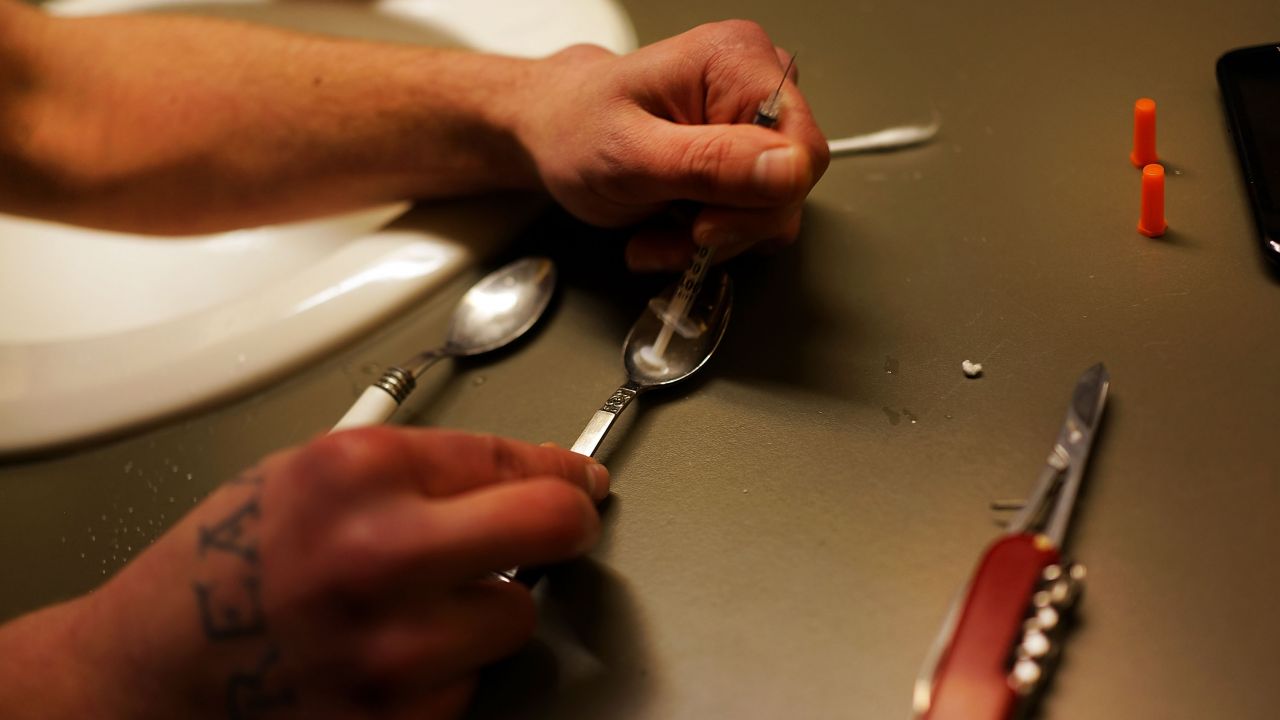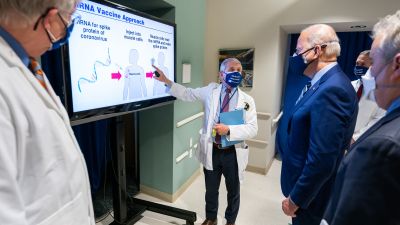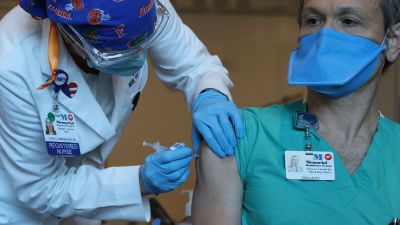
Drugs are prepared to shoot intravenously by a user addicted to heroin on February 6, 2014 in St. Johnsbury, Vermont. Heroin and other opiates have begun to devastate many communities in the Northeast and Midwest leading to a surge in fatal overdoses in a number of states. As prescription painkillers, such as the synthetic opiate OxyContin, become increasingly expensive and regulated, more and more Americans are turning to heroin to fight pain or to get high. (Photo by Spencer Platt/Getty Images)
The widely circulated photos of a couple allegedly under the influence of heroin and passed out in their car with a 4-year-old in the backseat are a visual reminder of the ravages of opioid addiction.
The images were shared on Facebook by Ohio’s East Liverpool Police Department, who say they published them to raise awareness of the heroin epidemic in their community. (The release of the photos has stirred controversy for not protecting the individuals’ privacy).
The driver intended to take the passenger, who is the grandmother of the child, to a hospital, according to the police report. He was stopped after police noticed him driving erratically. After the stop, the driver became unconscious and the passenger, who was also unconscious, was turning blue. Both were given the overdose reversal drug Narcan and transported to a hospital.
The story reminded us of another child who was featured in Bill Moyers’ groundbreaking 1998 series on addiction, Moyers on Addiction: Close to Home. In that report, 10-year-old T.J., who spoke about his life with parents addicted to heroin, admitted he had observed his parents injecting from the backseat of their car after they bought and cooked heroin. While T.J. described his parents as “nice people,” he acknowledged that living with heroin-addicted parents is “pretty hard of [an] experience because you don’t know what to do.”
Watch the clip:
In the last decade, heroin use has increased dramatically: In 2002, 100 people per 100,000 were addicted to heroin but that number had doubled by 2013, according to the Centers for Disease Control and Prevention, and the children of parents who are addicts continue to suffer.
Many of these children find safe placement with other family members, such as grandparents and aunts and uncles. A New York Times article in May noted that not since the crack epidemic of the 1980s and 1990s “have so many children been at risk because of parental drug addiction.”
Nationwide, 2.6 million grandparents were responsible for their grandchildren in 2014, the census shows, up 8 percent from 2000. Websites and Facebook pages like The Addict’s Mom, Grandparents Raising Grandchildren, The Parents of Drug Addicts and Before The Petals Fall are proliferating, drawing tens of thousands of people.
It has been reported that the 4-year-old boy in last week’s photos is going to live with his aunt and uncle in South Carolina, but not all children are so lucky. As T.J.’s father, Ted, who had battled heroin addiction for 20 years, pointed out in Close to Home, “With the kids, they always see the blood, the guts, the gore, the needles, the — the crying, the fighting, the lying, the stealing, the cheating part of it, and they’re just too young to see that.”
Heroin is an opioid, as are prescription medications such as Vicodin, Percocet and OxyContin. People who abuse or are dependent on prescription opioid painkillers are 40 times more likely to abuse or be dependent on heroin, according to the CDC.
Many people who are addicted to prescription opioids end up switching to heroin, which can be easier and cheaper to obtain. Opioids killed 28,000 people in 2014, more than any year since the CDC started keeping track. Four out of five new users of heroin started out by using prescription painkillers.
Back in the 1990s, doctors began prescribing more opioid-based painkillers. At the time, pharmaceutical companies claimed these drugs could be used to treat common conditions like back pain and arthritis without addiction. As we now know, those claims were false. Eventually, Purdue Pharma, the maker of OxyContin, plead guilty to misleading the public about the drug’s risk of addiction.
But the epidemic persists. Since 1999, the amount of prescription opioids sold in the US has quadrupled fueling the $9 billion opioid painkiller industry.
A 2015 investigation by The Intercept found that the pharmaceutical companies that dominate the market funded organizations attacking reform of the prescribing guidelines by the CDC. In March of this year, the CDC released new guidelines strongly discouraging doctors from prescribing opiates for common medical ailments.




